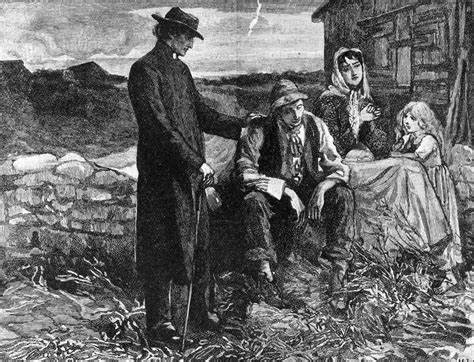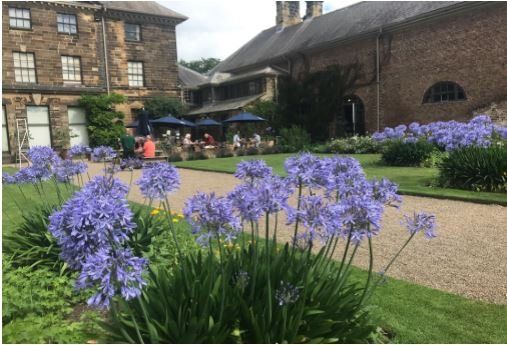YANT Talks Archives 2022
Talks Organiser: talks@yant.org.uk
Wednesday 9th February 2022 on Zoom
“A 20th Century Childhood” with Kitty Ross, Curator Leeds History/Social History
Abbey House Museum has been a focus for toy and childhood displays since the 1950s and this talk draws on the 20th century toy galleries, but also focuses on the growing collection of items related to Leeds Children’s Day (c1920-1960s).
A video of the Talk presented on Zoom by Kitty Ross entitled "A 20th Century Childhood - through the Leeds Museum collections" is now available to view below:-
Review - “A 20th Century Childhood” with Kitty Ross, Curator Leeds History/Social History
Kitty Ross curator of the Abbey House Museum (opposite Kirkstall Abbey) showed a selection of photos of museum exhibits which illustrated the century. These ranged from photos of children to board games to parades, to Leeds Children’s Day in Roundhay Park.
As the audience must have lived through, at least, the latter part of the century, there was plenty of nostalgia. The little girls with their hair ribbons, the trams, the “Silver Cross” prams, Rupert Bear, and Sooty.
Some of the scenes reminded us how life has changed, the trams have gone (despite promises to bring them back), traffic now clogs the streets, children spend hours watching the telly and Waddingtons who created many of the games are closed. So are Burtons, one photo showed their sports day. Leeds, once the home of the clothing industry, is now an important financial centre. Many of the poorer areas are transformed with the Armouries and restaurants along the river and canal.
Leeds has expanded and those of us who left, years ago, are still surprised when Otley is shown as part of the city.
This was certainly a trip down Memory Lane, and we are most grateful to Kitty for her talk.
On a personal note, I would not have driven into York, and I hope that we can continue to have some Zoom meeting.
Elizabeth Hiley

“The Irish in York” by Sarah Sheils
Saturday 19th November 2022 at 2.30pm
Friends’ Meeting House, Friargate, York
Sarah Sheils looks at the Irish people who settled in and around Walmgate.
Arriving as refugees from the Great Hunger of the 1840s, or later as economic migrants, the Irish found work here and stayed.
Sarah will explore how, although sometimes set apart by religion and culture, they were integrated into the community, becoming an accepted part of York’s heritage.
Review - The Irish in Walmgate: The Immigration Story-1840s to 1940s
Sarah Sheils on 19th November
Sarah Sheils introduced her talk by confirming that York has a long history of welcoming refugees, though not all residents shared in this welcome and it is probably fair to say that this dichotomy exists into the twenty-first century. It is apposite, too, that the National Trust is delving into how we should evaluate history, a perspective which highlights the relevance of the story of the Irish in York.
The 1840s brought one wave of Irish immigrants on the back of the famine caused by potato blight especially in the poorer farming areas of the west of Ireland. Samuel Tuke, whose great-aunt had moved to Ireland, took a particular interest in the problem and with other Quakers provided food banks as well as helping with passage to York where he was on the Board of Guardians. Whilst there was some sympathy for the newcomers, some residents were not so happy owing to the increase of typhoid which came in their wake. Tuke was not deterred and set up a hospital for the immigrants while his son, James Hack Tuke concentrated on providing more support in Ireland.
Accommodation in Walmgate was poor, some families living twelve to a single room. Premises were often damp given their proximity to the river Foss and the death rates were high. Many still spoke Gaelic, their first language, which continued to set them apart, at least in the first generation. Usual occupations were in the foundry, Leedhams Flour Mill and further afield on the chicory fields in East Yorkshire. Education was seen as a way out and, following the building of St George’s Catholic Church designed by J.J.Hansom, St George’s school for boys and girls was built (no longer extant).
By the end of the century there is evidence of an anti-Irish feeling possibly on account of an interest by the younger men in the Fenian movement and the beginning of acts of terrorism but to counterbalance this there is evidence of patriotic celebrations and integration in early photographs. Life chances, however, had not improved by 1901 when Seebohm Rowntree’s study of Poverty showed that the residents of Walmgate were the poorest in the city. This is not to say there was no relaxation as for example in the Brown Cow and Phoenix pubs, the first purpose-built cinema in the country (latterly known as Macdonalds furniture store) and pool tables upstairs in Stubbs ironmongers. All this is commemorated in two plaques to the Irish community on St George’s Church, the more recent of which proved controversial.
In the Q & A Sarah confirmed that while the Irish were often employed on the railways, these tended to be those who lived in and around Dalton Terrace off Tadcaster Road rather than in Walmgate. The talk was well presented and illustrated.
Dorothy Nott

The Gardens at Nunnington, Rievaulx Terrace and Ormesby
Nick Fraser, Head Gardener
Saturday 8th October 2022 at 2.30pm
Friends’ Meeting House, Friargate, York
Nick Fraser will tell us about the work of creating the gardens at Nunnington and at Ormesby.
Nunnington's garden has been organic for 20 years and is one of the National Trust’s flagship gardens for sustainability.
At Ormesby Hall gardens, recent developments include planting a wildflower meadow and an orchard with local apple trees, such as the Acklam Russet which is a native of this area.
Saturday 26th March 2022 at 11am
51st Annual General Meeting, Hilton Hotel, 1 Tower Street, York, YO1 9WD
Following the close of the meeting, there will be a talk by Alison Pringle, Gardens & Parks consultant for N. T.
The miutes of the 51st Annual General Meeting will be sent with the June 2022 Newsletter and will then be available on the website.
Review - Yorkshire and North East National Trust Gardens
Alison Pringle, Gardens and Parklands Consultant Yorkshire and the North East
Alison explained that her role is to offer advice and support to gardeners in 21 National Trust sites across this region. They vary from Lindisfarne Castle in the North to Wentworth Castle Gardens in the South with 180 miles between them. She is now actually visiting them, as over the last couple of years a lot of work has been on the phone and online.
Alison gave us some excellent images illustrating some of the work that is being undertaken. She started with an image of the “Surprise View” at Fountains Abbey showing how the Scots Pines frame the view and how, with her advice, the team, using binoculars, cameras and radio, carefully plan where to remove a branch to enhance the view.
The two recent February storms have hit gardens across the North hard but particularly at both Cragside and Wallington in Northumberland. One image of Cragside showed the many 20ft to 30ft spruces that were uprooted lying on the ground like a tin of pencils. The Fountains Abbey estate had triple problems this Winter with winds, snow and then flooding in quick succession including serious flooding of the River Skell.
At Ormesby Hall an Orchard has been developed with local apple trees such as the Acklam Russet a native of this area, other developments here include a wildflower meadow, and a pond area for children’s pond life activities.
Nunnington Hall Garden is one of the NT’s flagship gardens for sustainability and is a garden that has been organic for 20 years. There are many bee boxes around the site (red mason bees) useful for pollinating the fruit trees and head gardener Nick has developed a 7-bay composting system.
At Goddards a new access path has been built to allow step-free access to this 5 acre garden which Alison reminded us is a marvellous place to see sparrowhawks, particularly by the rock pool.
At Beningbrough, head gardener Sam and the Gardens Team are using cocoa husks from York Cocoa House as a mulch, particularly on the asparagus beds. The team won first prize at the Harrogate Autumn Flower Show with their fruit basket. Beningbrough has many important trees including the Duke of Cambridge Oak Tree which is included in the new book from the NT “The 50 great trees of the National Trust”.
This was a wonderful talk with beautiful images, and we learnt so much about the properties in the large area that Alison covers. We are grateful to Alison for giving us her time and her expertise.
Catherine Brophy
Tuesday 18th January 2022 : Dorothy Nott "The challenging world of women artists"
Zoom Talk at 7.30pm
An illustrated lecture showing us the often neglected work of women artists, including some in National Trust properties, with art historian
and YANT member Dr Dorothy Nott.

